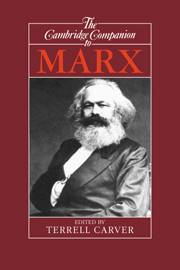4 - Science
Realism, criticism, history
Published online by Cambridge University Press: 28 May 2006
Summary
Some conjunctions - like Marx and the critique of political economy - are entirely natural ones. They emerge, that is, quite naturally in the course of reading Marx's works and following his own stated agenda. Marx wrote, repeatedly and at great length, about what he explicitly called “the critique of political economy” Not only did he offer to his reading public A Contribution to the Critique of Political Economy, but he also used similar terms to characterize a great deal of his published and unpublished work. No history of political economy would be complete without considerable attention to Marx and his works.
Other conjunctions - like Marx and the philosophy of science - border on the entirely artificial. They emerge, that is, rather artificially in the course of reconstructing Marx's works and pursuing questions that he raised only marginally. Not only did Marx never write a work on “the philosophy of science,” he never even used the phrase (which, in any case, was not popularized until after his death). More importantly, Marx wrote only two short tracts - the introduction to the Grundhsse and the Notes on Wagner (collected in Carver, 1975) - that sustained any sort of attention to topics that these days constitute the philosophy of science. Even then Marx did not complete these tracts or prepare them for publication. In this, Marx stands in stark contrast with many other theorists of the nineteenth century, including Auguste Comte, John Stuart Mill, William Whewell, Friedrich Engels, Max Weber, and Emile Durkheim. Marx did, to be sure, make a number of important asides about science and its methods, for example, in the Economic and Philosophical Manuscripts, The Poverty of Philosophy, The German Ideology, Grundhsse, and Capital, especially its various prefaces and afterwords.
- Type
- Chapter
- Information
- The Cambridge Companion to Marx , pp. 106 - 123Publisher: Cambridge University PressPrint publication year: 1991
- 3
- Cited by

